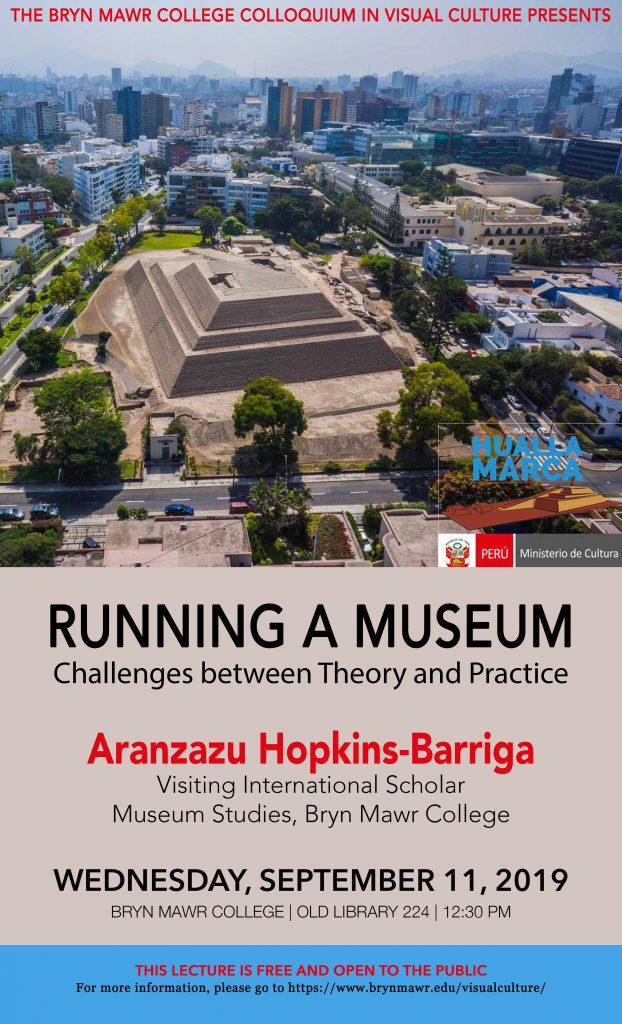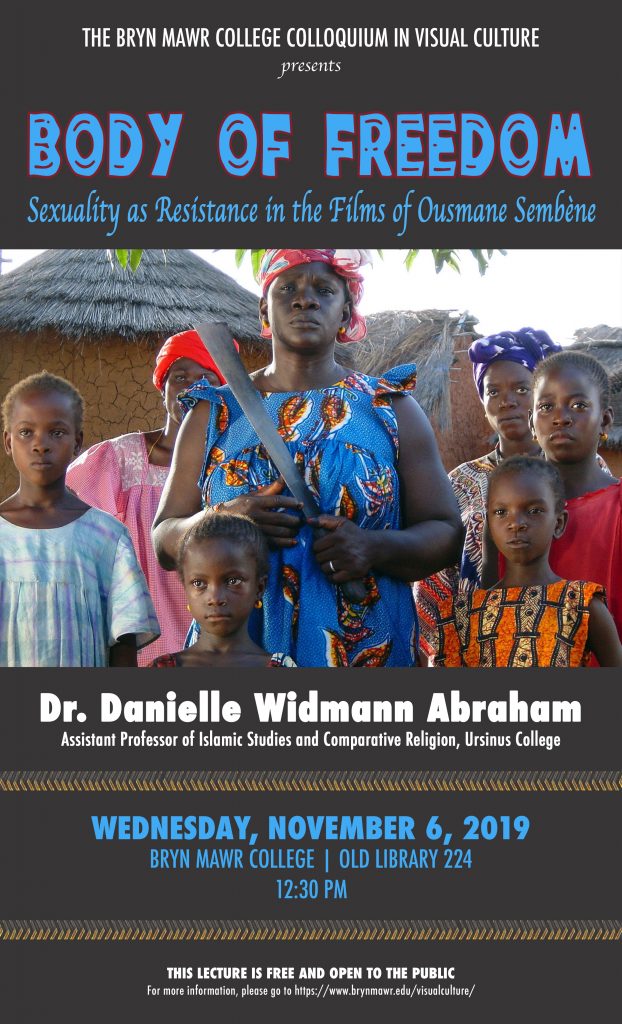Screening of Gyres 1-3
Category Archives: Events
April 15, 2020 – Martha Lucy
Deputy Director for Research, Interpretation & Education
Barnes Foundation
“Renoir, Impressionism and the Value of Touch”
April 22, 2020 – Giorgia Lupi
Information Designer
Pentagram
“The Human Side of Data”
co-sponsored by Computer Science and the President’s Office
Today, data are everywhere. But what do data really mean, and how can we extract real value from them in our daily lives? In this illustrated talk, information designer and Pentagram partner Giorgia Lupi will discuss our new data reality and “data humanism,” her unique philosophy for understanding and working with data.
Surveying her diverse work over the last decade, Lupi will introduce her distinctive approach to data visualization and offer a look into the far-reaching applications of her work in data and design, from corporate, to institutional, to personal.
Giorgia will encourage creatives (and non!) to harness data as a design tool, while respecting human privacy and experience in their output.
April 29, 2020 – C.C. McKee
Assistant Professor of History of Art on the Emily Rauh Pulitzer ’55 Professorship
Department of History of Art
Bryn Mawr College
“Shades of Revolution: Guillaume Guillon Lethière and Neoclassicism’s Other Environments”
This presentation explores the neoclassical oeuvre of Guillaume Guillon Lethière—a mixed-race painter who was born in Guadeloupe and ascended to the heights of the French Academié in the early-nineteenth century. Taking up a body of works executed over the course of the French and Haitian Revolutions, this paper centers on the inclusion of Caribbean ecological markers in Lethière’s history paintings. From this perspective, Lethière’s oeuvre articulates a relationship to the Caribbean as an ecology of blackness counterintuitively represented through Classicism. This is an ecology in its broadest sense; it encapsulates not only the psychic machinations of an individual mixed-race artist, but also the diffusion of raced identity into the landscape itself, and the co-mingling of blackness and the botanical in an independent Haiti. Lethière and his painting practice are a distinct node at which multiple colonial dialectics converge: the tumultuous politics of Revolutionary France and Haiti, the liberatory political possibilities of the Classics and botany for black subjectivities, and the interpenetrating psychological and environmental ecologies that opened as much as they foreclosed for Lethière.
September 11, 2019 – Aranzazu Hopkins-Barriga
Director of the Archaeological Museum of Huallamarca in Lima, Peru
Visiting International Scholar
Museum Studies, Bryn Mawr College
“Running a Museum: Challenges between Theory and Practice”
As an art historian and an art conservator, being a director of an archaeological museum is a huge challenge. Museums have become spaces of multi directional engagements that approach culture with different perspectives.
For many years, museums have been spaces where the public was not considered in institutional policies. All related museum fields were focused on how we investigate the objects and their surroundings, without understanding that culture and art are not always together, but retro feeding themselves all the time.
This talk will cover topics that are changing in museum public policies. I will consider the contrast of intercultural art, its ancient roots, and how this creative chain has evolved in this new form of viewing, showing and investigating art. This phenomenon involves theory and practice, studying context, life and individuals.
September 18, 2019 – Qinna Shen
Associate Professor of German and Chair
Department of German and German Studies
Bryn Mawr College
“Female Desire, Pop-Rock, and the Tiananmen Generation: The Synergy of Sexual and Political Revolutions in the Banned Chinese-German Film Summer Palace (颐和园, 2006)”
1989 comprises a vital part of the Tiananmen generation’s memory and identity. Yet, any attempt to address the turbulent events in mass media, however oblique, carries a high risk of censorship. Lou Ye, a prominent Sixth Generation director, took that risk in his film Summer Palace (2006). His iconoclastic exploration of sex and politics at a thinly disguised Beijing University was banned in China and languishes in relative obscurity in the West. This talk teases out the rich and complex texture of this masterpiece by undertaking an expository reading of Summer Palace’s plot in conjunction with its musical soundtrack and many intertextual references. The film’s narrative arc stretches from Beijing to Berlin, linking two cities where communist rule was openly challenged in 1989, and using a delayed death in Berlin as an opportunity to commemorate the dead of 1989, constructing an alternative site of mourning for the victims in Beijing.
September 25, 2019 – Alfreda Murck
Lecturer in Discipline of Chinese Art History
Columbia University
“Cui Bai’s Magpies and Hare: A Political Allegory”
In the eleventh century of the Northern Song (960-1127), Cui Bai painted Magpies and Hare, a sensitive depiction of an autumn scene in which a hare has startled two magpies. Cui Bai’s Magpies and Hare is classified as a bird-and-flower painting. That is, it is grouped with paintings that are considered primarily decorative with auspicious meanings. It is celebrated as an example of highly-finished and technically accomplished painting. I would like to propose that Cui Bai’s masterpiece can be enjoyed as an autumnal scene and can also be understood as a response to an imperial scandal that began in the fall of 1060 and continued through 1061, the year inscribed on the painting. During that period, court officials critiqued Renzong (r. 1022-63) for failure to manage his family. The precipitating incident involved Renzong’s attractive daughter, who preferred the company of eunuchs to that of her husband. I will argue that through carefully assembled images, Cui Bai alluded to the eunuch, the princess, her husband, and to the court officials who commented on the tangled affair.
October 2, 2019 – Erin Pauwels
Assistant Professor of Art History
Tyler School of Art & Architecture
Temple University
“Consuming Copies: Napoleon Sarony & the Circulation of Nineteenth-Century Public Images”
Napoleon Sarony was among the first celebrity artists in the United States and during the late nineteenth century he was revered as the “father of artistic photography in America.” His modern legacy however has been obscured by perceptions that his work was too commercial in nature and that he was more invested in Barnumesque self-promotion than in art. This talk examines how the system of networked authorship that structured Sarony’s early career in popular lithography shaped his later priorities, and considers whether his assertion of singularity in the face of emerging mass visual culture may actually have been a radical gesture.
October 30, 2019 – Byron Wolfe
Tyler School of Art & Architecture
Temple University
“Drowned Rivers, Phantom Skies, and Trees as Clocks: Lessons Learned from Artifacts and Collaborative Investigations”
In a brief overview spanning two decades of collaborative creative work, Byron Wolfe will discuss lessons learned while investigating artifacts that range from iconic photographs of the American West to Wissahickon schist, a local stone used for building. His talk will explore the photography of Eadweard Muybridge, Carleton Watkins, Ansel Adams, and Eliot Porter (among others) and will introduce a new project that includes research of Bryn Mawr’s Dr. Florence Bascom, Professor, and the first female geologist for the USGS.






